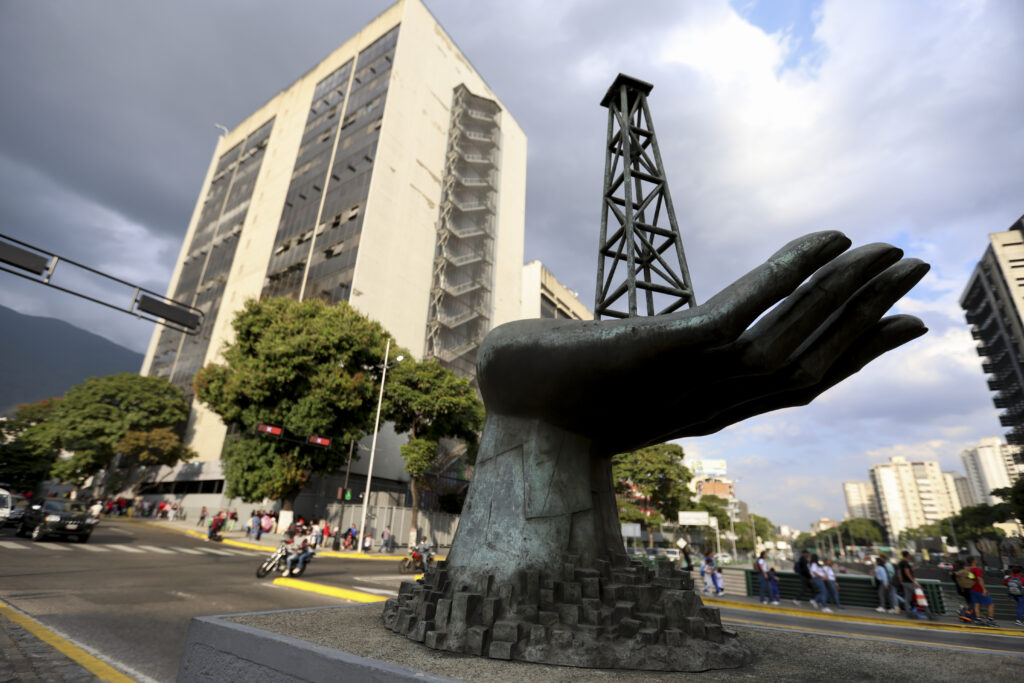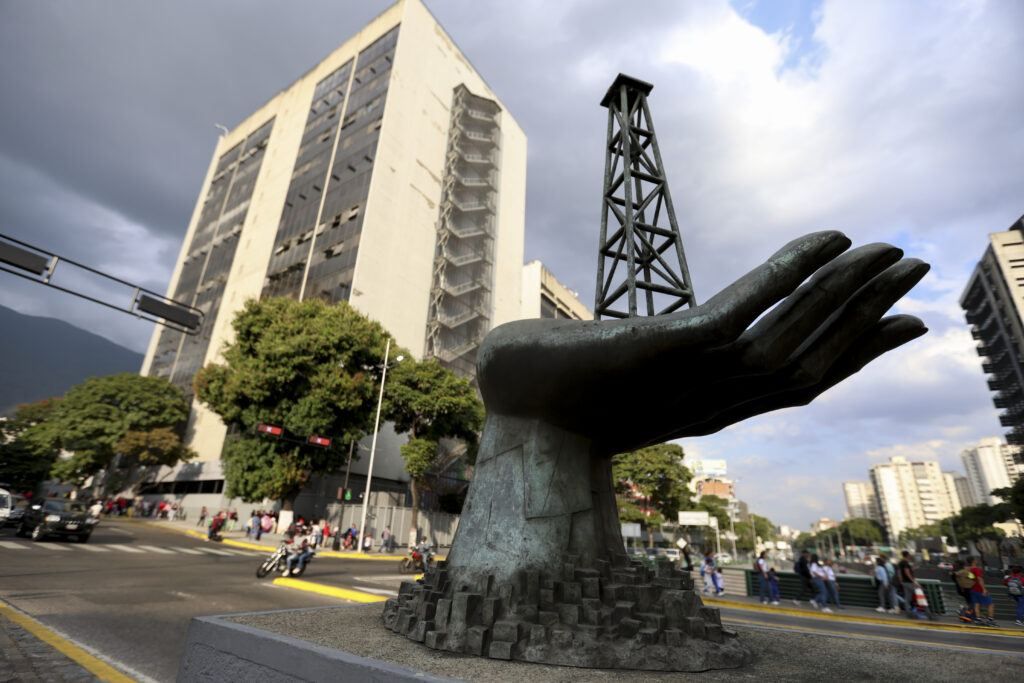Tech firms lead Asian markets higher, oil swings after Maduro ouster
Asian stocks rose Monday on the back of a fresh rally in tech firms and oil fluctuated as investors weighed the impact of the US ouster of Venezuelan leader Nicolas Maduro.While the South American leader’s removal added to geopolitical risk on global markets, traders chose to focus on the long-running artificial intelligence boom and hopes for more US interest rate cuts.The first full week of business for 2026 will also see the release of key jobs data that could play a role in the Federal Reserve’s decision-making on borrowing costs.Investors will also be on the lookout for an idea about who US President Donald Trump chooses to take the helm at the central bank when Jerome Powell steps down in May.In early trade, Asian stocks were up across the board, led by markets with heavy tech presence.Tokyo surged 2.8 percent thanks to tech investor SoftBank’s four percent gains and chip equipment maker Tokyo Electron’s five percent advance.The Kospi in Seoul gained more than two percent, with SK Hynix up more than three percent and Samsung Electronics soaring 4.6 percent.Taipei was 2.5 percent up as chip titan TSMC rocketed more than five percent.Hong Kong, Shanghai, Sydney, Singapore, Wellington and Manila were also well up.The gains suggest investors were brushing off worries that valuations in the tech sector have become stretched and warnings about the timing and size of returns on huge AI investments.”This move now stands as the strongest start to a year for Asian equities since 2012, coming on the heels of a global market that just delivered its best annual return since 2017,” wrote Stephen Innes at SPI Asset Management.Still, Kyle Rodda at Capital.com warned: “Valuations remain around levels exceeded only by the Dot.com bubble, while allocation to equities are at elevated levels at the same time allocation to cash is on the low side.”Most simply put, the markets probably need to see more evidence of resilient US growth, continued disinflation and therefore US rate cuts, strong corporate earnings, and the pay-offs from artificial intelligence to keep on rising.”Safe-haven investment gold was up more than one percent at about $4,400 per ounce.Oil shifted between gains and losses after US forces attacked Venezuela early Saturday, bombing military targets and spiriting away Maduro and his wife to face federal charges in New York.Venezuela has the world’s largest proven oil reserves, and more Venezuelan crude in the market could exacerbate oversupply concerns and add to recent pressure on prices.Trump said the United States will now “run” Venezuela and send US companies to fix its dilapidated oil infrastructure.But analysts say that alongside other major questions about the South American country’s future, substantially lifting its oil production will not be easy, quick or cheap.After years of under-investment and sanctions, Venezuela pumps around one million barrels per day, down from around 3.5 million in 1999.”Any recovery in production would require substantial investment given the crumbling infrastructure resulting from years of mismanagement and underinvestment,” UBS analyst Giovanni Staunovo told AFP.Investing today also holds little appeal as oil prices are weighed down by a supply glut, and fell last year.- Key figures at around 0230 GMT – Tokyo – Nikkei 225: UP 2.8 percent at 51,759.10 (break)Hong Kong – Hang Seng Index: UP 0.3 percent at 26,428.49Shanghai – Composite: UP 0.9 percent at 4,004.99West Texas Intermediate: DOWN 0.7 percent at $57.28 per barrelBrent North Sea Crude: UP 0.1 percent at $60.79 per barrelEuro/dollar: DOWN at $1.1696 from $1.1720 on FridayPound/dollar: DOWN at $1.3437 from $1.3460 Dollar/yen: UP at 157.06 yen from 156.85 yenEuro/pound: DOWN at 87.05 pence from 87.07 penceNew York – Dow: UP 0.7 percent at 48,382.39 points (close)London – FTSE 100: UP 0.2 percent at 9,951.14 (close)
Tech firms lead Asian markets higher, oil swings after Maduro ouster
Asian stocks rose Monday on the back of a fresh rally in tech firms and oil fluctuated as investors weighed the impact of the US ouster of Venezuelan leader Nicolas Maduro.While the South American leader’s removal added to geopolitical risk on global markets, traders chose to focus on the long-running artificial intelligence boom and hopes for more US interest rate cuts.The first full week of business for 2026 will also see the release of key jobs data that could play a role in the Federal Reserve’s decision-making on borrowing costs.Investors will also be on the lookout for an idea about who US President Donald Trump chooses to take the helm at the central bank when Jerome Powell steps down in May.In early trade, Asian stocks were up across the board, led by markets with heavy tech presence.Tokyo surged 2.8 percent thanks to tech investor SoftBank’s four percent gains and chip equipment maker Tokyo Electron’s five percent advance.The Kospi in Seoul gained more than two percent, with SK Hynix up more than three percent and Samsung Electronics soaring 4.6 percent.Taipei was 2.5 percent up as chip titan TSMC rocketed more than five percent.Hong Kong, Shanghai, Sydney, Singapore, Wellington and Manila were also well up.The gains suggest investors were brushing off worries that valuations in the tech sector have become stretched and warnings about the timing and size of returns on huge AI investments.”This move now stands as the strongest start to a year for Asian equities since 2012, coming on the heels of a global market that just delivered its best annual return since 2017,” wrote Stephen Innes at SPI Asset Management.Still, Kyle Rodda at Capital.com warned: “Valuations remain around levels exceeded only by the Dot.com bubble, while allocation to equities are at elevated levels at the same time allocation to cash is on the low side.”Most simply put, the markets probably need to see more evidence of resilient US growth, continued disinflation and therefore US rate cuts, strong corporate earnings, and the pay-offs from artificial intelligence to keep on rising.”Safe-haven investment gold was up more than one percent at about $4,400 per ounce.Oil shifted between gains and losses after US forces attacked Venezuela early Saturday, bombing military targets and spiriting away Maduro and his wife to face federal charges in New York.Venezuela has the world’s largest proven oil reserves, and more Venezuelan crude in the market could exacerbate oversupply concerns and add to recent pressure on prices.Trump said the United States will now “run” Venezuela and send US companies to fix its dilapidated oil infrastructure.But analysts say that alongside other major questions about the South American country’s future, substantially lifting its oil production will not be easy, quick or cheap.After years of under-investment and sanctions, Venezuela pumps around one million barrels per day, down from around 3.5 million in 1999.”Any recovery in production would require substantial investment given the crumbling infrastructure resulting from years of mismanagement and underinvestment,” UBS analyst Giovanni Staunovo told AFP.Investing today also holds little appeal as oil prices are weighed down by a supply glut, and fell last year.- Key figures at around 0230 GMT – Tokyo – Nikkei 225: UP 2.8 percent at 51,759.10 (break)Hong Kong – Hang Seng Index: UP 0.3 percent at 26,428.49Shanghai – Composite: UP 0.9 percent at 4,004.99West Texas Intermediate: DOWN 0.7 percent at $57.28 per barrelBrent North Sea Crude: UP 0.1 percent at $60.79 per barrelEuro/dollar: DOWN at $1.1696 from $1.1720 on FridayPound/dollar: DOWN at $1.3437 from $1.3460 Dollar/yen: UP at 157.06 yen from 156.85 yenEuro/pound: DOWN at 87.05 pence from 87.07 penceNew York – Dow: UP 0.7 percent at 48,382.39 points (close)London – FTSE 100: UP 0.2 percent at 9,951.14 (close)
Trump insists US ‘in charge’ in Venezuela
President Donald Trump insisted Sunday the United States is “in charge” of Venezuela after the seizure of Nicolas Maduro, but was also dealing with the new leadership in Caracas.Venezuela’s interim leader Delcy Rodriguez said at the same time that she was ready to work together with the Trump administration, asking the US leader for a balanced, respectful relationship.Trump has faced searching questions over his repeated assertions that Washington is now running Venezuela following the US military operation that spirited away Maduro and his wife before dawn Saturday.The deposed Maduro is due to appear in a New York court Monday to face federal narcotrafficking charges.”We’re dealing with the people who just got sworn in. Don’t ask me who’s in charge because I’ll give you an answer and it’ll be very controversial,” Trump told reporters on Air Force One when asked if he had spoken to Rodriguez.Pressed on what he meant, Trump said: “It means we’re in charge.”The Trump administration says it is willing to work with the remainder of Maduro’s government as long as Washington’s goals, particularly opening access to US investment in Venezuela’s enormous crude oil reserves, are met.Asked whether the operation was about oil or regime change, Trump replied: “It’s about peace on earth.”- ‘It’s a broken country’ -The US president said elections in Venezuela would have to wait. “We’re going to run it, fix it, we’ll have elections at the right time, but the main thing you have to fix is it’s a broken country,” he said.As he struck his triumphant tone, Trump also had harsh words for other US adversaries, saying Colombia’s leader was “not going to be doing it very long,” Communist-ruled Cuba was “ready to fall” and that Iran’s leadership will be “hit hard” if protesters are killed.Trump had earlier threatened that Rodriguez would pay a “big price” if she does not cooperate with the United States.Venezuelan opposition figure Edmundo Gonzalez Urrutia, in an Instagram post Sunday from exile in Spain, said Maduro’s capture was “an important step, but not enough” to return the crisis-hit nation to normal.Gonzalez Urrutia called for the results of the 2024 election — which he claims to have won — to be upheld and for all political prisoners to be freed to ensure a “democratic transition.”Venezuelans braced for the political aftermath of the stunning raid, in which US commandos swooped in on helicopters, backed by fighter jets and naval forces, to capture Maduro. Residents queued up to buy food in grocery stores, and the masked and heavily armed police visible the previous day were gone, AFP correspondents said.Some 2,000 Maduro supporters — including rifle-wielding men on motorcycles — rallied Sunday in Caracas, however, with crowds shouting and waving red, blue and yellow Venezuelan flags.The Venezuelan military announced it recognized Rodriguez — previously Maduro’s vice president — as acting president, and urged calm.Venezuelan hospitals have refused to divulge the number of people killed or injured in the attacks. A doctors’ group told AFP around 70 people were killed and 90 injured. A military source, speaking on condition of anonymity, put the death toll at at least 15.But Havana said 32 Cubans died in the US raid. Trump said “a lot” of Maduro’s Cuban security detail were killed.- Who will run Venezuela? -Despite the success of the initial US operation, questions mounted over Trump’s Venezuela strategy.Trump said Saturday the United States will “run” the South American country of about 30 million people.But Secretary of State Marco Rubio stressed Sunday that Washington is not seeking complete regime change or elections.The United States is fighting drug traffickers, “not a war against Venezuela,” Rubio told NBC’s “Meet the Press.”However, he said a large US naval presence would remain in the Caribbean to enforce a blockade of Venezuelan oil exports for “tremendous leverage.”With questions swirling on Capitol Hill, an administration official told AFP that Rubio will discuss Venezuela in meetings with lawmakers Monday.Trump has made clear Washington intends to call the shots in Venezuela, with a focus on securing access to the world’s largest proven oil reserves.Maduro, a self-described socialist, led Venezuela with an iron fist for more than a decade through a series of elections widely considered rigged. He came to power after the death of his charismatic mentor, Hugo Chavez.As news of Maduro’s capture rippled out, exiled Venezuelans waved flags and celebrated in plazas from Madrid to Santiago. About eight million Venezuelans have fled the grinding poverty and political suppression of their homeland.burs-dk/mlm
Trump insists ‘we need Greenland’
President Donald Trump doubled down Sunday on his claim that Greenland should become part of the United States, despite calls by Denmark’s prime minister to stop “threatening” the territory.Washington’s military intervention in Venezuela has reignited fears for Greenland, which Trump has repeatedly said he wants to annex, given its strategic location in the Arctic.While aboard Air Force One en route to Washington, Trump reiterated the goal.”We need Greenland from the standpoint of national security, and Denmark is not going to be able to do it,” he said. Over the weekend, Katie Miller, the wife of Trump’s most influential aide, posted an image of the flag of Greenland in the colours of the US flag, captioning it “SOON”.Denmark and the European Union have responded with ire to Trump’s Greenland agenda.”I have to say this very clearly to the United States: it is absolutely absurd to say that the United States should take control of Greenland,” Danish Prime Minister Mette Frederiksen said in a statement on Sunday.She called on Washington to stop “threatening its historical ally”.European leaders were rattled by Trump sending his military to attack Caracas and grab Venezuelan president Nicolas Maduro, who is now being detained in New York.Trump has said the United States will now “run” Venezuela indefinitely and tap its huge oil reserves.He says Greenland, which is rich in critical minerals vital for the tech industry, is needed for US national security. Asked in a telephone interview with The Atlantic about the implications of the Venezuela military operation for Greenland, Trump said that it was up to others to decide, according to the magazine Sunday.”They are going to have to view it themselves. I really don’t know,” Trump was quoted as saying. He added: “But we do need Greenland, absolutely. We need it for defense.”Greenland’s Prime Minister Jens-Frederik Nielsen called Miller’s flag post “disrespectful”.”Relations between nations and peoples are built on mutual respect and international law — not on symbolic gestures that disregard our status and our rights,” he wrote on X.But he also said that “there is neither reason for panic nor for concern. Our country is not for sale, and our future is not decided by social media posts”.- Allies? -Stephen Miller is widely seen as the architect of much of Trump’s policies, guiding the president on his hardline immigration policies and domestic agenda.Denmark’s ambassador to the United States, Jesper Moeller Soerensen, offered a pointed “friendly reminder” in response to Katie Miller’s post that his country — a NATO member — has “significantly boosted its Arctic security efforts” and worked together with Washington on that.”We are close allies and should continue to work together as such,” Soerensen wrote.Katie Miller was deputy press secretary under Trump at the Department of Homeland Security during his first term.She later worked as communications director for then-vice president Mike Pence and also acted as his press secretary.




